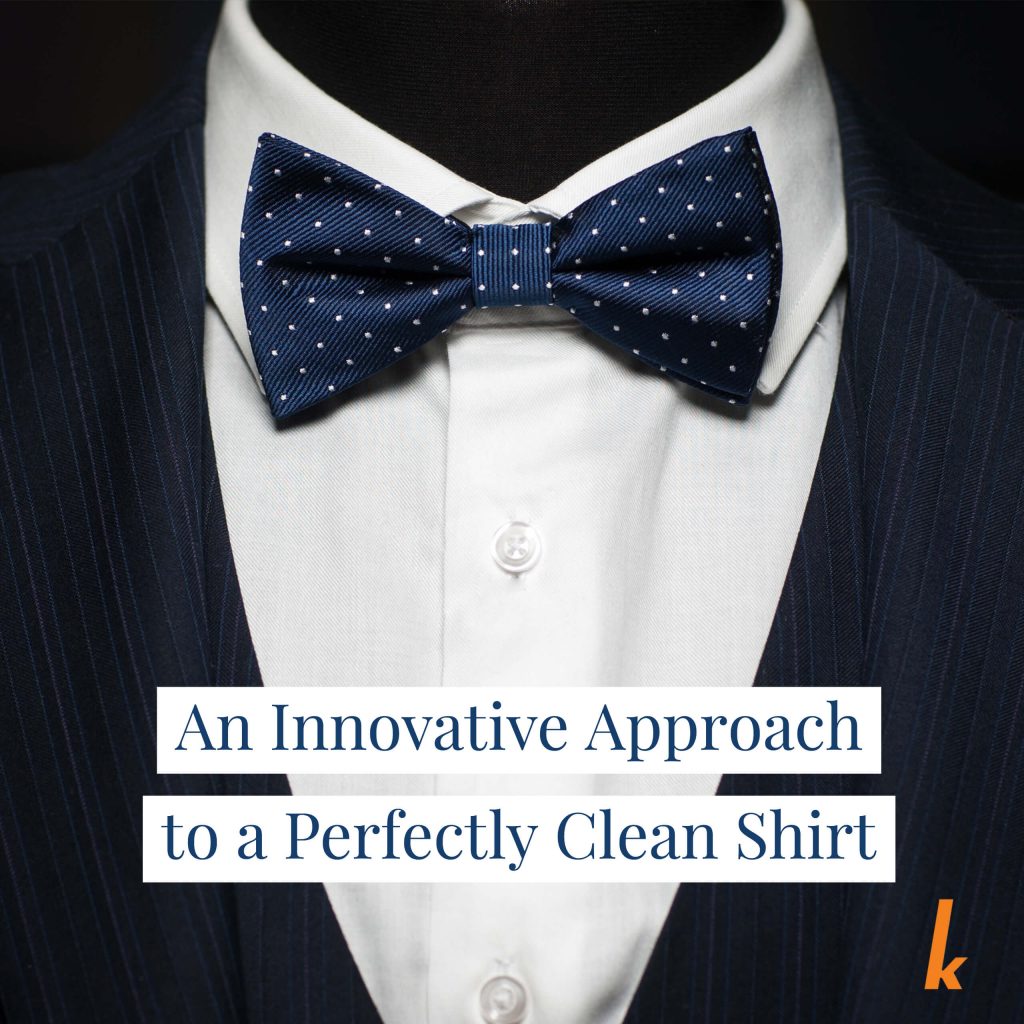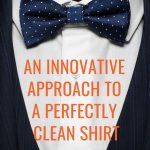The most common item brought into every dry-cleaning facility does not get dry cleaned.
Shirts outnumber every other garment on average 4 to 1 and despite your attempts to define your quality by how proficiently you can remove a stain from a silk blouse or expertly press that Italian suit. It is the quality of the lowest priced garment you produce which can influence the client’s retention the most. A bright, crisp shirt, free of stains and pressed to perfection helps keep the dry-cleaning machine and the bank account full. Now this is a generality, there are discount shops that stay busy only with shirts, and high-end shops who send their shirts out (usually to the lowest bidder) and yet the doors remain open, but for most dry-cleaning companies the secret sauce depends heavily on what leaves the plant on a white wire hanger.
An Innovative Approach to a Perfectly Clean Shirt
Kreussler’s responsibility ends at the washer, we can not offer much help with a poorly pressed shirt, but the best pressed dull shirt with collar soil and coffee stains do nothing to help retain clients. The chemistry to effectively clean a shirt is varied and complex and probably the most misunderstood and underappreciated miracle in the plant. Using 8 oz of product, we expect to remove everything from fat and oil, skin, tannin and protein, even makeup and pigment soil from roughly 50 lbs of shirts in about 18 minutes of wash time, not an easy task.
Accomplishing this takes two paths; a liquid system or a powder and both have a unique set of advantages. For this article I will focus on our heavy duty washing powder Trebon Plus and will return to our options for liquid systems in a future piece, but if a liquid system is what you prefer, please do not wait to ask us, our liquid formulations offer unrivaled results and we would be happy to explore this with you directly.
One of the most popular products we offer is Trebon Plus, and no other powder laundry detergent comes close to it and for excellent reasons. Trebon Plus is a concentrated mixture of several different active ingredients including:
- Layer Silicates
- Oxygen Bleach
- High-grade protease enzymes
- Optical brighteners
- Liquid surfactants (that is right, there is a liquid surfactant in our powder detergent)
Each of these unique ingredients have a role to play in effective washing, let us take a closer look. Layer silicates play the part of conditioning the water, which by itself doesn’t clean very well. These small particles reduce the surface tension of water allowing it to penetrate quickly into the fabric. They also collect and complex certain metal ions dissolved in most water, reducing the hardness and risk for encrustation. Finally, they elevate the pH to a safe and effective range allowing cotton fibers to swell, releasing pigment soil and increasing the activity of the oxygen bleach and enzymes. Because layer silicates have little affinity to the fabric the need to chemically neutralize is usually eliminated, and a safe, skin-friendly pH is accomplished by rinsing alone.
Removing some stains originating from organic matter is beyond the ability of most washing procedures, so we use bleaching agents to remove the color from those stains, making them invisible. We use high-grade oxygen bleach to do just this, reacting quickly in the water this product disrupts the electrons in the stain and stops their ability to give back energy in the visible light spectrum. It is essential to select a bleach which can adequately react to stain matter in a short time frame without damaging colors, and ours does just that.
Protease enzymes are amines that search out a specific part of a protein chain and cut it. Doing this over and over again an effective enzyme will turn one solid insoluble structure into a million tiny pieces which can now be flushed away from the fabric they encased. These little workhorses need to be useful in a broad temperature range and elevated pH conditions.
Optical brighteners are a dye that absorbs light in the ultraviolet range and reflects it back in the blue range of the visible spectrum, which our eye detects as brilliant white. The use of optical brighteners is vital to the finished look of the shirt, but they will not compensate for poor washing and a lack of stain removal.
Rounding out our formulation is a liquid surfactant. Surfactant helps to break down fats and oils and suspend soil and pigment in the wash water, without this any stains containing a fat would have a protective shield from bleaches and enzymes and fabric would act as a filter picking up pigments from the water and turning polyester material grey and dull.
If you are a happy client of Trebon Plus, I say thank you and remember how much power is in that powder you just added into the wheel.
If you are not using Trebon Plus in your shirt laundry take a look at what you are using, how many products, how much scrubbing, how many shirts come back to the spotting line and then give us a call. For about two cents per piece you can have a brilliantly clean shirt your clients will notice and appreciate.


